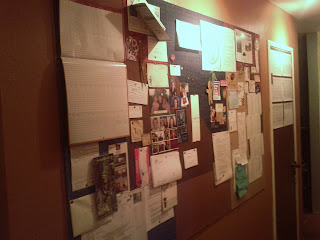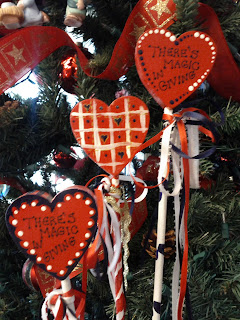I try in all things to be prepared so this blog entry tackles the subject of water storage and water purification in case of
an emergency. My Friend, Jackie gave me a packet of information and that is the source of most of my
information. Most of the information she gave me has no source on the paperwork but the few that do come
from the 'How to Survival Library' and 'Emergency Essentials' websites. The
Emergency Essentials website has a link on this page.
'Water is one of the most important
survival necessities after any major disaster. A person can survive weeks
without food, but only a few days without water.' Anonymous
So how much? How do we store it? What sources can we get
it from? How do we make sure that it is healthy? What can we do to purify
it?
So how much Water should We be Storing?
Well
according to my sources about
a gallon a day per person for
basic needs - if you want to include a sponge bath on that basic needs then you
will need to increase it to two gallons. You should store
a minimum of
3 days worth of water for you and your family (7 is suggested). You
just can't depend on the government to get there to help any quicker than
that. Also remember any special needs you may have in your home - babies,
seniors, health issues - all need to be taken into consideration when deciding
the amount of water to store. You absolutely
DO NOT want to
ration water during an emergency so plan accordingly.
How do We
Store it?
You can store in a multitude of containers. It's not
suggested that you use thin walled containers (like milk jugs) since they are
designed to breakdown and are permeable to gases. They can even absorb the last
thing that was stored in them and then contaminate the water.
New
containers are the best but you can use thicker walled containers like
soda bottles, juice bottles, and even canning jars (although glass may break in
a disaster). Make sure that the seal on the top is tight and that they are
thoroughly clean. Opaque containers are the best since that prevents light from
reaching the water - slowing the growth of any algae. Storing in chlorine
bleach bottles is acutally not suggested because of the residue of bleach in the
bottle. You can, however, use this water for personal hygene. Oh, and
never use metal containers.
Another option would be
the large barrels for storage since you can store up to 55 gallons at a
pop. But these are expensive and for those that live in apartments there is a
problem with storing such a large container. Also in case of emergency if you
have to evacuate the area then carrying a 55 gallon container of water would be,
well, pretty much impossible since the water alone weighs about 440 pounds. So
having water in both smaller containers and the larger drums is the best
option.
Make sure you
label the water
and
rotate the water in your water storage about
every
six months. Water actually has a long shelf life (several years
according to one source) if it is stored correctly but when you rotate your
stock you preserve the quality of the water for a longer period of time. You
also have a chance to see if any of your stock has become contaminated or if any
containers have leaked. I can think of nothing worse than thinking your
prepared only to find when the need arises that 1/2 of your water is no longer
useable.
Make sure you store your water away from paint products or
gasoline or anything that has an odor (even onions and soap) as your water may
pick up that making it unpleasant to drink. This is why the thicker the
container the better. And store them in an area where light cannot reach them
otherwise you may end up with bacteria or algae growth. And store up off the
ground.
Make sure when you store the water that you put a purifying agent
in the water before you seal it up (like chlorine bleach or iodine) to help with
preserving the water. Although several sources said that you should
NEVER trust stored water. You just don't know if something
that you can't see has gone horribly wrong with the water.
Can I Use of Existing Water
Sources?
When you first have an emergency you want to use the
existing water sources in your home first. They are more likely to get
contaminated or evaporate than your safely stored water. So what water sources
can I use in my home?
Well, first you can use your water heater
water. There is a spigot on the bottom side wall of your water heater. Drain
it into a bucket and then you can use it from there. Oh, and according to my
sources it drains easier if you open a faucet in your home. Something to do
with water pressure in the lines. Please note too if you do not empty your
water heater on a regular basis then you will have a build up of sediment that
will come out too. So you will have to purify this water before use.
You
can also use the water out of the toilet flush tank (not the bowl). Of course,
it goes with out saying that this will have to be purified. You may want to use
it just for personal hygiene or water for your pets if it grosses you out to
think of cooking or drinking it.
Do not use the water if you use one of
those 'blue' tablet things or any chemical cleaning product in your bowl. You
can't purify the chemicals out unless you have a specialize filter that does
that.
Then there is melted ice cubes from your freezer - that's kind of a
'duh' item that I would forget. If you have freezer space then it is a good
idea to freeze water too in large containers. It does two things - gives you
water storage and fills up the freezer with ice so if your freezer goes down in
an emergency then you have already built in ice packs that will help to keep the
food cold longer. Oh, and for daily use it costs less to keep your freezer cold
if it is full. So fill up that extra space with frozen water
containers.
Make sure that you take advantage of any liquid in any canned
foods that you have too. That extra liquid can be used for cooking, etc.
And the biggest source of water, for those that have it, is your
swimming pool or hot tub. There is a difference of opinion on whether or not
you should use the water from your pool or spa. There are a lot of chemicals in
this water (so we can keep our pools and spas sparkling) so use this source last
for drinking and cooking and use ONLY after purifying. But you can use all you
want for personal hygiene. And just a FYI here too - we have a large pond in
our yard that we could use as a water source too. There are no chemicals in it
(we have fish) but it obviously would need to be purified too but it would be no
different than using the water from a river that has fish.
Water Sources
NOT to use include hot water boilers (from heating systems), radiators and water
beds. Water beds actually have fungicides added to the water and over the years
will have probably absorbed some of the chemicals from the vinyl. Again these
sources can be used for non food uses. If you want to wash your hair with water
from your water bed - go ahead :)
How do I Purifying
Water?
One of the nightmares in an emergency situation is
getting bad water. How many time have we heard in the paper after the disaster
happens that people are dying of Cholera or some other water born illness.
Giardia is one of the more commonly know bugs and it is everywhere. It is
ranked among the top 20 infectious death causing diseases in Africa, Asia and
Latin America. We see it mostly in the mountain streams in the US but it is in
our water so we need to be vigilant.
Purifying your water is not only
important but
essential for keeping your family safe during an
emergency. There are several ways that you can purify water.
First and
the most suggested way is boiling. You need to boil the water for 10 minutes
(if you are at high altitudes then add an additional 10 minutes). This will
remove most 'bugs' but it will not remove chemical contaminates. The water will
also taste flat so aerate it by pouring the water back and forth between two
different containers (clean containers) to get some of the air back into it.
The one big negative that I can see with boiling is that you are using another
precious resource to do it and that is whatever you are using for
heating/cooking.
Another option is using bleach in your water. Make sure
that the bleach is 5.25% hypochlorite bleach (Clorox) and is no more than 2
years old (the older it gets the more it looses its 'umph'). Also check to
make sure it has no additives or scents added to the bleach before you use it.
Add 2 drops to clear water and 4 drops to cloudy water of bleach to 1 quart of
at least 75 degree water then wait 1/2 hour. If it's colder than 75 degrees
then leave it over night. If you cannot smell or taste the chlorine then you
need to add another dose and wait an additional 15 minutes. If you cannot smell
or taste the chlorine after the second dose then you
do not want to use
the water.
Iodine is another option - use 2% tincture of iodine, 3 drops
for clear water and 6 drops for cloudy water for 1 quart of 75 degree water for
20 minutes. Iodine will leave a foul after taste but the water will be safe.
Oh, and note that Women who are pregnant or nursing or people with thyroid
problems should avoid this water.
You can always distill your water too.
This is done by boiling your water and then hanging a metal bowl over the
boiling pot. The clean water will attach itself to the bowl. You simply tip
the bowl over a cup or pot and the water will roll off the surface. There are
some challenges with logistics on this one but the water will be clean enough to
drink. The flavor will be flat on this one too (like boiling) and you will be
using up your heating and cooking materials.
There is always the option
of purification tablets but they expire within a few short years but don't
dismiss them because of this. They are very effective in treating water and
easy to store in your 72 hour kits. Just make sure you pull them when they
expire and put new ones in.
Last on my list of water purifying items is
to use a filter. There are so many different kinds of filters on the market.
This is, if you can afford it, the absolute best option for water purification.
There are levels on the different water filters so pay attention and make sure
you get what you want. Some only protect against the bad bugs - like Giardia
and Cryptosporidium while the next level of filters will actually take out
viruses. If you want filters that remove chemicals then you will want the next
level water treatment filter. Like I said you need to be aware of what you want
and how much you are willing to spend. We have the katadyn filter (
www.beprepared.com) and use it for hiking
and our food storage - it's small enough to remove all scary bacteria and some
of the viruses (but not all). It also does not address the chemical
contamination issues. It does what we need it to do for normal water
purification.
So that's it - in a very short nut shell. Enjoy!






































